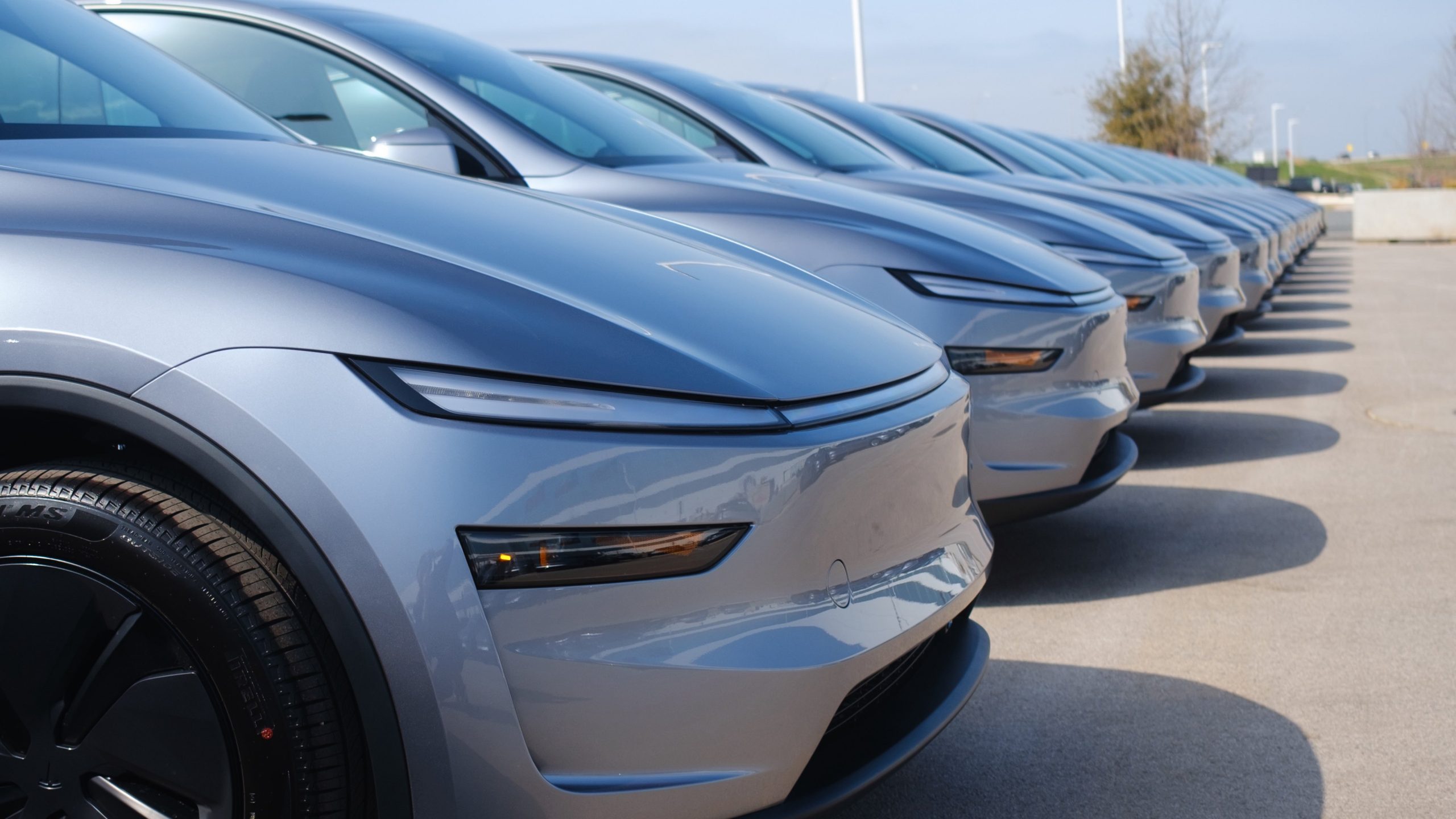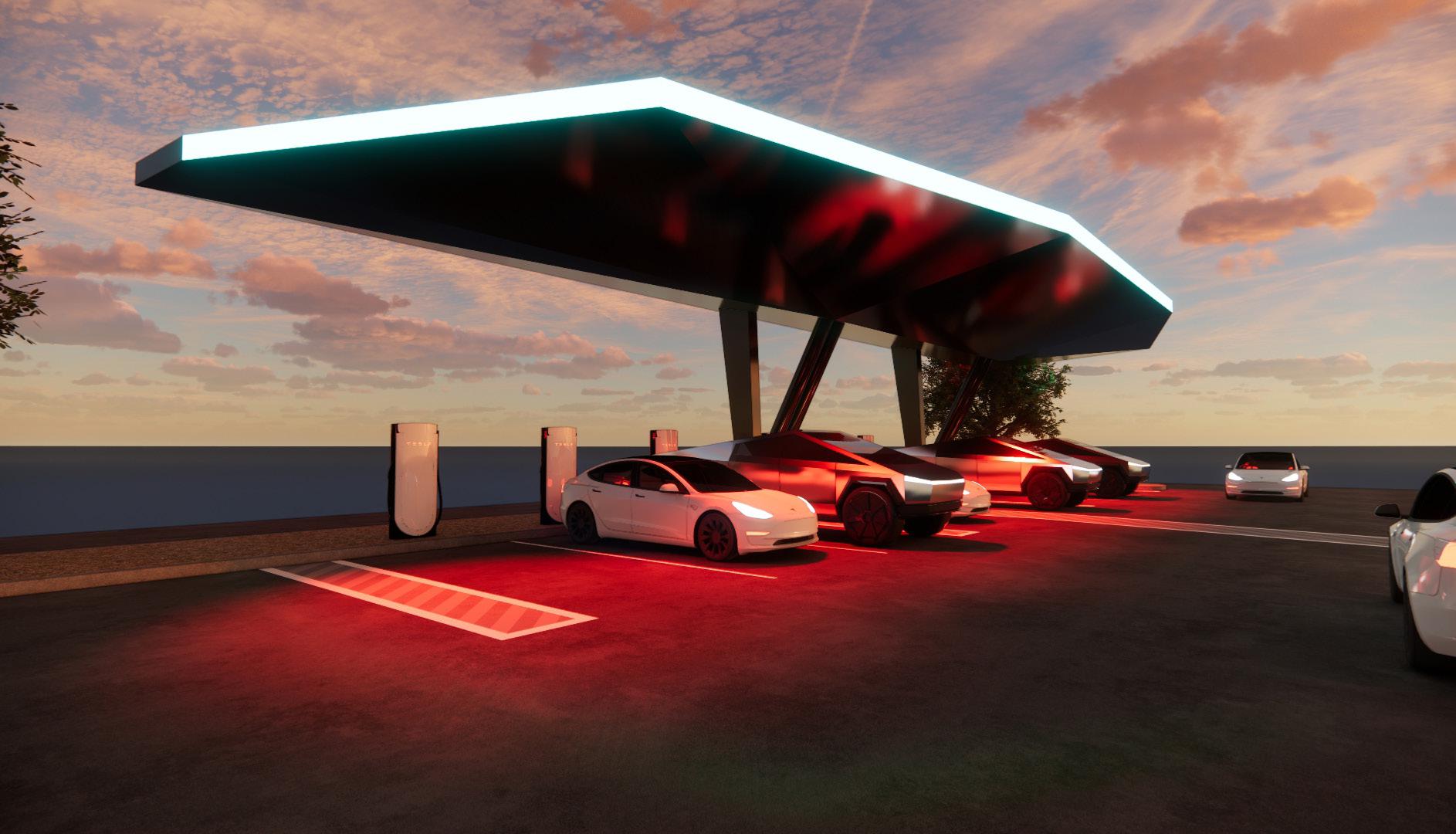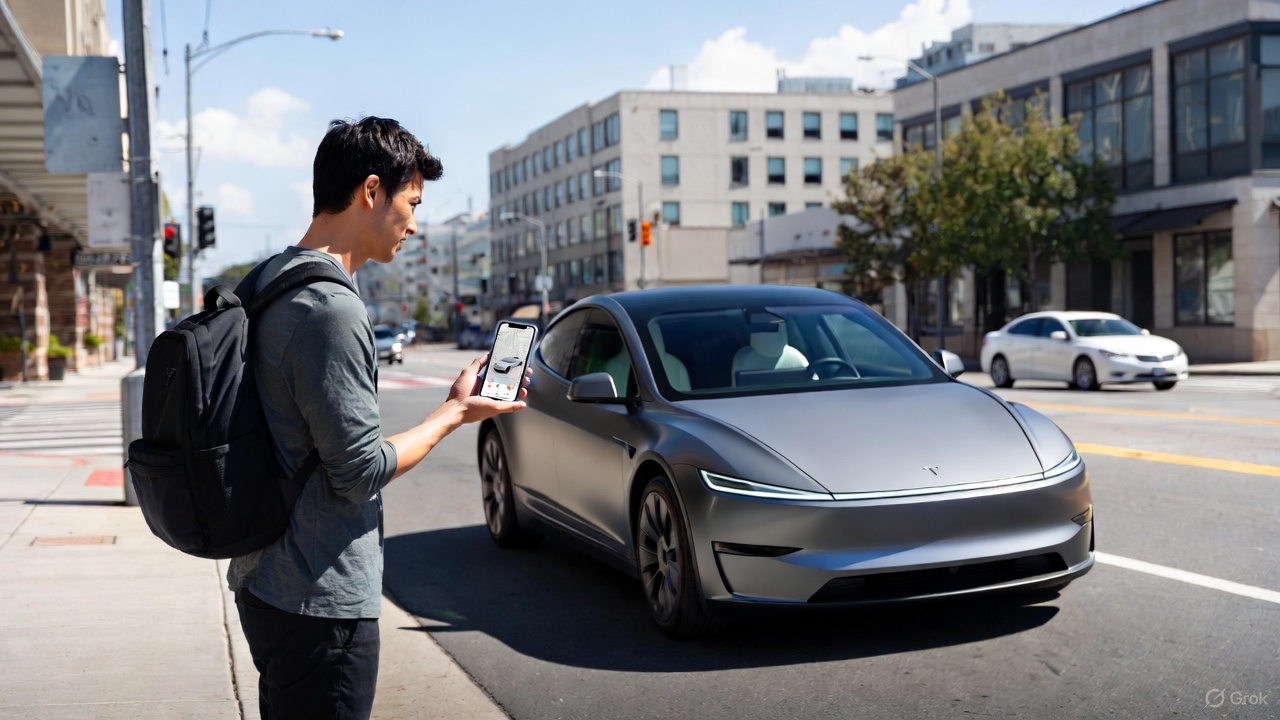News
EV tax credit rule adjustment provides short-term win, but long-term warning
There are broader implications of the credit’s new rules, which could be viewed as an “extension,” although, fundamentally, the credit could mask the true issue that many EV makers will face: generally speaking, electric cars are still too expensive.

The IRS adjusted the EV tax credit rule last week, which was a big win for consumers. It now allows car buyers to lock up an agreement to buy a vehicle instead of having to take delivery before the deadline of September 30.
This has tremendous advantages for both consumers and companies. For consumers, they are no longer rushed to take delivery of a car that might not be their exact pick just to qualify for the tax credit. Instead, they can build the car they want, make a marginal down payment on it, and still take delivery, even after September 30, and still get the $7,500 off.
For carmakers, they are no longer restricted by production capacity or supply bottlenecks, and can get a vehicle to a buyer after the deadline instead of delivering bad news. The consumer just needs to commit monetarily first.
However, there are broader implications of the credit’s new rules, which could be viewed as an “extension,” although, fundamentally, the credit could mask the true issue that many EV makers will face: generally speaking, electric cars are still too expensive.
Consumer Behavior and Market Dynamics
Everyone is expecting EV makers’ Q3 sales to be slightly higher than normal, as this is the final quarter when the $7,500 EV credit will be available. Buyers are rushing to take advantage of the credit before it expires.
The urgency of car buyers to take advantage of the credit seems to be a positive in the short term. However, there are some indications that this could lead to a “boom-and-bust” cycle, and how EVs sell in subsequent quarters could be a very disappointing reality.
If EVs were at a price point where they were more affordable and people did not need $7,500 off to buy one, we would not be seeing this influx of orders. The fundamental issue with the tax credit is the fact that it is a bit of a crutch for automakers, and that crutch is about to be removed — abruptly.
Sustained incentives for EVs are something that was never going to be available under the Trump Administration. The true demand of EVs will be revealed in Q4, and likely over the first two quarters of 2026.
Policy Instability is a Barrier for Consumers…and Automakers
With the One Big Beautiful Bill that the Trump Administration rolled out, the tax credit’s sunset came abruptly.
Previously, the credit’s termination was set for 2032, but the change, which is absolutely justified in terms of the White House’s powers, sets a tough precedent moving forward: different administrations and different planning for how government funds are spent could dramatically alter plans.
For consumers, their confidence in the stability of these types of programs will be decreased. If a Democrat gets elected in 2028, will the credit return? It’s likely that the credit could become an “On for 4, Off for 4” type of arrangement, depending on the party in the White House, as well as the concentration of that party in the House and Senate.
For automakers, the long-term planning of their supply chains, including whether domestic manufacturing is prioritized and how much capital to allocate toward EVs, becomes a significant question.
If it needs volume to bring down EV prices, the absence of a credit will impact that drastically. Fewer people being able to afford EVs because of their premium prices could put companies in a very strange predicament.
Their roadmaps for their future lineups will be impacted, and they may have to go back to the drawing board for future plans.
Environmental and Economic Stakes
It is important to remember that the EV tax credit was not just a way to make cars more affordable. It was a tool to reduce emissions from passenger transportation. This is the largest source of greenhouse gases in the United States.
Ending the credit risks slowing progress toward climate goals and ceding ground to global competitors, especially China, a global tech hub that has a large population willing to embrace new tech.
Xiaomi CEO congratulates Tesla on first FSD delivery: “We have to continue learning!”
The U.S. needs a stable, long-term strategy to incentivize both consumers and manufacturers to reach climate goals. Short-term band-aids are not going to drive innovation or adoption forward.
Call to Action
To secure a thriving and equitable future for the EV industry, Congress could consider a variety of alternatives that benefit buyers who could use assistance. A tiered incentive program that prioritizes affordability and American innovation would benefit buyers who prefer an EV while making them accessible to lower and middle-income families and buyers.
Higher credits for EVs priced under $40,000 to reach these income levels would be ideal. Additionally, bonuses for vehicles and batteries that are domestically sourced would also encourage car companies to bring manufacturing to the United States, while also helping car buyers lean toward vehicles built here.
The rush to secure credits by consumers proves that incentives work. The United States should be working toward a long-lasting framework that makes EVs accessible to all, while giving the country a competitive edge to compete against powerhouses like China.

News
Tesla gamifies Supercharging with new ‘Charging Passport’
It will also include things like badges for special charging spots, among other metrics that will show all of the different places people have traveled to plug in for range.

Tesla is gamifying its Supercharging experience by offering a new “Charging Passport,” hoping to add a new layer to the ownership experience.
While it is not part of the Holiday Update, it is rolling out around the same time and offers a handful of cool new features.
Tesla’s Charging Passport will be available within the smartphone app and will give a yearly summary of your charging experience, helping encapsulate your travel for that year.
It will also include things like badges for special charging spots, among other metrics that will show all of the different places people have traveled to plug in for range.
Tesla has just introduced “Charging Passport,” a new yearly summary of your charging.
• Charging badges: Iconic Charging badge (for visiting places like the Tesla Diner, Oasis Supercharger, etc), Explorer badge, green saver badge, etc.
• Total unique Superchargers visited
•… pic.twitter.com/c1DHTWXpj7— Sawyer Merritt (@SawyerMerritt) December 8, 2025
Tesla will include the following metrics within the new Charging Passport option within the Tesla app:
- Charging badges: Iconic charging badges for visiting places like the Tesla Diner, Oasis Supercharger, etc., Explorer Badge, and more
- Total Unique Superchargers Visited
- Total Charging Sessions
- Total Miles Added during Charging Sessions
- Top Charging Day
- Longest Trip
- Favorite Charging Locations
This will give people a unique way to see their travels throughout the year, and although it is not necessarily something that is needed or adds any genuine value, it is something that many owners will like to look back on. After all, things like Spotify Wrapped and Apple Music Replay have been a great way for people to see what music they listened to throughout the year.
This is essentially Tesla’s version of that.
With a handful of unique Superchargers already active, Tesla is also building some new ones, like a UFO-inspired location in New Mexico, near Roswell.
Tesla is building a new UFO-inspired Supercharger in the heart of Alien country
News
Tesla launches its coolest gift idea ever just a few weeks after it was announced
“Gift one month of Full Self-Driving (Supervised), which allows the vehicle to drive itself almost anywhere with minimal intervention.”

Tesla has launched its coolest gift idea ever, just a few weeks after it was announced.
Tesla is now giving owners the opportunity to gift Full Self-Driving for one month to friends or family through a new gifting program that was suggested to the company last month.
The program will enable people to send a fellow Tesla owner one month of the company’s semi-autonomous driving software, helping them to experience the Full Self-Driving suite and potentially help Tesla gain them as a subscriber of the program, or even an outright purchase.
Tesla is going to allow owners to purchase an FSD Subscription for another owner for different month options
You’ll be able to gift FSD to someone! https://t.co/V29dhf5URj
— TESLARATI (@Teslarati) November 3, 2025
Tesla has officially launched the program on its Shop. Sending one month of Full Self-Driving costs $112:
“Gift one month of Full Self-Driving (Supervised), which allows the vehicle to drive itself almost anywhere with minimal intervention. All sales are final. Can only be purchased and redeemed in the U.S. This gift card is valued at $112.00 and is intended to cover the price of one month of FSD (Supervised), including up to 13% sales tax. It is not guaranteed to cover the full monthly price if pricing or tax rates change. This gift card can be stored in Tesla Wallet and redeemed toward FSD (Supervised) or any other Tesla product or service that accepts gift card payments.”
Tesla has done a great job of expanding Full Self-Driving access over the past few years, especially by offering things like the Subscription program, free trials through referrals, and now this gift card program.
Gifting Full Self-Driving is another iteration of Tesla’s “butts in seats” strategy, which is its belief that it can flip consumers to its vehicles and products by simply letting people experience them.
There is also a reason behind pushing Full Self-Driving so hard, and it has to do with CEO Elon Musk’s compensation package. One tranche requires Musk to achieve a certain number of active paid Full Self-Driving subscriptions.
More people who try the suite are likely to pay for it over the long term.
News
Tesla expands Robotaxi app access once again, this time on a global scale
Tesla said recently it plans to launch Robotaxi in Miami, Houston, Las Vegas, Phoenix, and Dallas.

Tesla has expanded Robotaxi app access once again, but this time, it’s on a much broader scale as the company is offering the opportunity for those outside of North America to download the app.
Tesla Robotaxi is the company’s early-stage ride-hailing platform that is active in Texas, California, and Arizona, with more expansion within the United States planned for the near future.
Tesla said recently it plans to launch Robotaxi in Miami, Houston, Las Vegas, Phoenix, and Dallas.
The platform has massive potential, and Tesla is leaning on it to be a major contributor to even more disruption in the passenger transportation industry. So far, it has driven over 550,000 miles in total, with the vast majority of this coming from the Bay Area and Austin.
First Look at Tesla’s Robotaxi App: features, design, and more
However, Tesla is focusing primarily on rapid expansion, but most of this is reliant on the company’s ability to gain regulatory permission to operate the platform in various regions. The expansion plans go well outside of the U.S., as the company expanded the ability to download the app to more regions this past weekend.
So far, these are the areas it is available to download in:
- Japan
- Thailand
- Hong Kong
- South Korea
- Australia
- Taiwan
- Macau
- New Zealand
- Mexico
- U.S.
- Canada
Right now, while Tesla is focusing primarily on expansion, it is also working on other goals that have to do with making it more widely available to customers who want to grab a ride from a driverless vehicle.
One of the biggest goals it has is to eliminate safety monitors from its vehicles, which it currently utilizes in Austin in the passenger’s seat and in the driver’s seat in the Bay Area.
A few weeks ago, Tesla started implementing a new in-cabin data-sharing system, which will help support teams assist riders without anyone in the front of the car.
Tesla takes a step towards removal of Robotaxi service’s safety drivers
As Robotaxi expands into more regions, Tesla stands to gain tremendously through the deployment of the Full Self-Driving suite for personal cars, as well as driverless Robotaxis for those who are just hailing rides.
Things have gone well for Tesla in the early stages of the Robotaxi program, but expansion will truly be the test of how things operate going forward. Navigating local traffic laws and gaining approval from a regulatory standpoint will be the biggest hurdle to jump.








